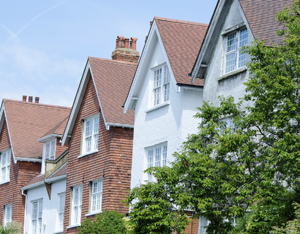For nearly 17,000 households in Johnson County, paying the bills is a month-to-month balancing act.
Making the rent payment and buying groceries for the family is difficult. Maintaining a car or other form of transportation, keeping their health care and finding someone to watch their children while they work is a near impossibility.
And according to a new report by the United Way, more and more households in the county find themselves struggling to survive.
The Indiana Association of United Ways released its statewide data on poverty and basic needs Wednesday. The report measures not just people who meet the federal definition of poverty, but also residents who are employed, yet their income and assets make it difficult to pay basic bills.
The percentage of households struggling with poverty in Johnson County still is better than the state average. But a growing number of people find themselves squeezed by the economic constraints surrounding them.
Since 2007, the percentage of households falling beneath that struggling line has grown from 25 percent to 32 percent. Johnson County is better than the state average of 36 percent, but pockets of the county struggle more than others.
In Edinburgh, 59 percent of the households — 908 families — are below or near poverty. Franklin recorded 39 percent of its households below that level, while Greenwood had 37 percent below it.
The United Way created the report to track the segment of the population known as Asset Limited, Income Constrained, Employed — or ALICE.
To be considered in poverty, a single adult has to make $11,670 or less, while a family of four would have an income of $23,850 or less.
A number of people make slightly more than that, but have no savings and are one emergency away from dipping below that poverty line. These are classified as ALICE, said Maureen Noe, president and CEO of the Indiana Association of United Ways.
“People are working. But it’s easy to not see ALICE, because they work hard and they’re not going to complain,” she said. “This data creates a compelling case that maybe a community isn’t doing as well as it thinks.”
In 2014, the United Way analyzed living expenses for each county in Indiana, figuring the minimum income it would take for people to be able to afford needs such as housing, food, child care, transportation and health care.
That level became the measuring stick to determine the most vulnerable people in the community.
For Johnson County, a single adult who made less than $18,396 would have difficulty paying their bills. The minimum jumps to $54,372 for a family with two adults, one infant and one preschooler.
The average costs for healthcare for two young children is more than $13,000 each year, with housing for a family of four running $9,300 and transportation requiring $8,400.
In order to meet those costs, a two-adult family would need to make a combined $27.19 an hour.
With this data in hand, United Way officials now have better tools to approach the poverty issue and address ways to improve life for local residents, Noe said.
“Because of the data and the profile, it can solidify the community around some long-term solutions,” she said. “That’s really what we want to do.”
[sc:pullout-title pullout-title=”By the numbers” ][sc:pullout-text-begin]
Struggling in Johnson County
Percentage of county households below the basic cost of living threshold
- 2014: 32 percent
- 2012: 30 percent
- 2010: 29 percent
- 2007: 25 percent
Monthly household survival budget for a family of two adults, one infant and one preschooler in Johnson County
- Housing: $777
- Child care: $1,092
- Food: $533
- Transportation: $702
- Health care: $587
- Miscellaneous: $412
- Taxes: $428
- Total: $4,531
Minimum annual income needed for a family of four to survive in Johnson County: $54,372
Percentage of households below the basic cost-of-living threshold in 2014
- Johnson County: 32 percent
- Hamilton County: 17 percent
- Hendricks County: 23 percent
- Bartholomew County: 34 percent
- Boone County: 29 percent
- Marion County: 44 percent
— Information from the Asset Limited, Income Constrained, Employed report released by the Indiana Association of United Ways
[sc:pullout-text-end]





